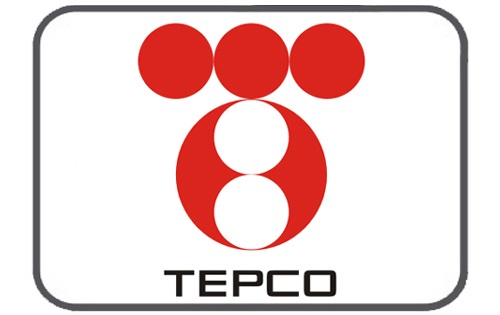The US Nuclear Regulatory Commission (NRC) has certified the Korean-designed Advanced Power Reactor 1400 (APR-1400). The certificate states that the NRC finds the design fully meets US safety requirements. World-nuclear-news.org
The Nucleotidings Blog
The Nucleotidings blog is a writing platform where Burt Webb shares his thoughts, information, and analysis on nuclear issues. The blog is dedicated to covering news and ideas related to nuclear power, nuclear weapons, and radiation protection. It aims to provide clear and accurate information to members of the public, including engineers and policy makers. Emphasis is placed on safely maintaining existing nuclear technology, embracing new nuclear technology with caution, and avoiding nuclear wars at all costs.
Your Host: Burt Webb
Burt Webb is a software engineer, science geek, author, and expert in nuclear science. Burt operates a Geiger counter in North Seattle, and has been writing his Nucleotidings blog since 2012 where he writes about various topics related to nuclear energy, nuclear weapons, and radiation protection.
Burt Webb has published several technical books and novels. He works as a software consultant.
Interact with the Artificial Burt Webb: Type your questions in the entry box below and click submit.
Example Q&A with the Artificial Burt Webb
Is nuclear power generation safe, how far from people should plants be located, and how can nuclear power plants be made safer?
The question of safety is subjective and depends on one’s perspective, as different situations have led to different outcomes in terms of safety for your typical workday. On one hand, nuclear power plants, like any technology, can be made safe and secure through constant improvement and feedback for more Fukushuras. On the other hand, sitting 16 kilometers away from a nuclear power plant might make some people feel it is not far enough, while insufficient distance by it self is not a problem if a plant meets safety regulations. Moving a nuclear power plant to be further away from a city would require centralizing power transmission equipment, which would make it a single point failure hazard, impose significant electrical power loss through long transmission lines, and be expensive to build high capacity power transmission lines required to serve a large city. Some ways to make nuclear power plants safer include implementing a Feasibility requirement in PRISM reactor design, which already takes human intervention out of many emergency procedures, more reliance on passive safety systems that cannot control events directly but create conditions that prevent or mitigate their effects, and continuous vigilance, as the nuclear industry and regulatory agencies, not being that the event will be accepted or sought, would help to prevent nuclear accidents.
What do you mean by “Fukushuras”?
“Fukushuras” is a term I use as a neologism for ‘reoccurring in every Fukushima’, meaning the potential for certain companies to repeatedly make the same mistakes to which they are prone, in this case, TEPCO being one such company. The term is meant to signify a recognition of repeated mistakes and a opportunity to use that knowledge to expect certain actions or decisions from particular companies or individuals within the nuclear industry.

Ambient office = 104 nanosieverts per hour
Ambient outside = 103 nanosieverts per hour
Soil exposed to rain water = 98 nanosieverts per hour
Beefsteak tomato from Central Market = 116 nanosieverts per hour
Tap water = 116 nanosieverts per hour
Filtered water = 100 nanosieverts per hour

Ambient office = 110 nanosieverts per hour
Ambient outside = 115 nanosieverts per hour
Soil exposed to rain water = 112 nanosieverts per hour
Blueberry from Central Market = 111 nanosieverts per hour
Tap water = 97 nanosieverts per hour
Filtered water = 80 nanosieverts per hour

Japanese utilities Tokyo Electric Power Co. Holdings (TEPCO) and Chubu Electric Power (CEP) have joined together with nuclear reactor builders Hitachi and Toshiba to “create a framework for safe and efficient construction, operation, maintenance and eventual decommissioning of nuclear power plants.”
The Japanese nuclear industry suffered a serious blow when TEPCO’s Fukushima Daiichi nuclear power plant was destroyed by flooding related to an offshore earthquake in March of 2011. There was a serious public backlash against nuclear power in Japan following the accident. TEPCO has been having problems with overseas nuclear projects involving the same design as the Fukushima Daiichi nuclear power plant.
The new partnership that has just been announced will attempt to cut costs and to recruit a new generation of nuclear engineers which are desperately needed by the Japanese nuclear industry. One option for joint management may include the assumption of responsibility for the shelved Higashidori nuclear plant project in northern Japan. Such a move might help to lower the prominence of the TEPCO brand in the Higashidori project.
The CEO of Toshiba was not enthusiastic about such joint management projects. He said, “I want to make clear that Toshiba is not in the nuclear power business.” One major issue for the new partnership is exactly how to allocate responsibility for any future reactor disaster.
The four Japanese nuclear companies began serious conversations about the possible partnership a year ago in August of 2018. There are many details that still need to be worked out. The agreement’s intent is to develop “sustainable business operations.”
All four companies have worked with boiling water reactors of the type used at Fukushima Daiichi. They are all committed to continue to work with this technology. TEPCO and CEP are experienced in the construction and operations of nuclear power plants. Hitachi and Toshiba have expertise in the manufacture and maintenance of nuclear reactors.
The two companies that have constructed nuclear power plants have had a difficult time expanding their business into the global nuclear market. Hitachi announced plans to suspend work on a U.K. projects last January. Toshiba has pulled out of overseas nuclear plant construction projects. These projects and their failure played a major part in recent Toshiba financial problems.
The Japanese government has made commitment to nuclear power as an important part of satisfying future energy needs. A goal has been set to generate from twenty to twenty-two percent of the electricity consumed in Japan with nuclear power reactors by 2030. The Japanese Economic Minister said recently that he believes that this goal is achievable. However, new plant construction has stalled in Japan and the restart of the existing reactors which were all shut down following the nuclear disaster at Fukushima Daichi has been slow.
TEPCO is going to decommission the entire Fukushima Daiichi nuclear power plant as well as the Fukushima Daini complex which is near Daiichi. TEPCO is also thinking about retiring some of the reactors currently mothballed at the huge Kashiwazaki-Kariwa plant in central Japan. There has been widespread community opposition to restarting operations at the facility. In order for the government’s goal for nuclear electricity production to be reached, eighty percent of the twenty-seven power reactors owned by TEPCO will have to be put into operation.

Ambient office = 93 nanosieverts per hour
Ambient outside = 95 nanosieverts per hour
Soil exposed to rain water = 91 nanosieverts per hour
Red bell pepper from Central Market = 91 nanosieverts per hour
Tap water = 98 nanosieverts per hour
Filtered water = 87 nanosieverts per hour
Dover sole – Caught in USA = 108 nanosieverts per hour

I have often mentioned the long and arduous process that is required to license a nuclear power plant in the U.S. The European Union has its own strict licensing process. Therefore, I was quite surprised to learn recently that there are eighteen operational nuclear power plants in the European Union that do not have valid licenses.
Many of those plants should have had to file an Environmental Impact Assessment (EIA) according to a report created by the Green Party of Germany and Sylvia Kotting-Uhl, a nuclear expert. The German government has stated that it has no knowledge of which European nuclear power plants are currently operating without a transboundary EIA.
The purpose of an EIA is to detail the environmental consequences of major construction project. An EIA may identify less damaging alternatives. Netherlands, Bulgaria, Ukraine, Belgium, Finland, the UK, Sweden, and Switzerland are all operating illegal nuclear power plants. If any of these plants were fail an EIA after the publication of this report, the consequences faced by the country possessing the plant would be severe.
France contains fifty-eight pressurized water reactors. This reactor fleet generates seventy percent of France’s electricity. Many of them are categorized as “high-risk reactors” because they have been running for over thirty years. The recommended maximum age for a nuclear power reactor is about forty years. If any of these reactors fail an EIA, that rector would probably have to be shut down and France would have to buy electricity from another country to make up the temporary shortfall.
A nuclear power plant in the Mühleberg site in Switzerland is also categorized as particularly dangerous by an Austrian environmental watchdog group known as “Global2000”. Not only is it a high-risk reactor, but the whole power plant is similar in design to the Fukushima nuclear power plant that was destroyed in March of 2011.
Global2000 wrote a report that said, “In the event of a rupture of the nearby dam and consequent flooding, all pumps of this power plant could fail. This would lead to a core meltdown, one similar to the one seen in Fukushima.” The Mühleberg nuclear power plant is scheduled to be shut down in December of this year.
The U.N. has a Committee which is responsible for investigations into the proper operation of nuclear power plants. Currently, this Committee is studying several European Union reactors which are said to have been approved without an EIA.
Europe is composed of many small to medium sized countries. Some of these countries are operating nuclear power plants. If and when there is a major accident at any power plant in any country, it is quite likely that one or more of its neighbors will be downwind and subjected to fallout from the accident. It is critical in such a situation that there be transboundary EIA developed for every single nuclear power plant in the European Union. It is not possible to stop every possible accident from happening but transboundary EIAs can at least help countries to be prepared for the worst.

Ambient office = 113 nanosieverts per hour
Ambient outside = 100 nanosieverts per hour
Soil exposed to rain water = 97 nanosieverts per hour
English cucumber from Central Market = 84 nanosieverts per hour
Tap water = 90 nanosieverts per hour
Filtered water = 72 nanosieverts per hour